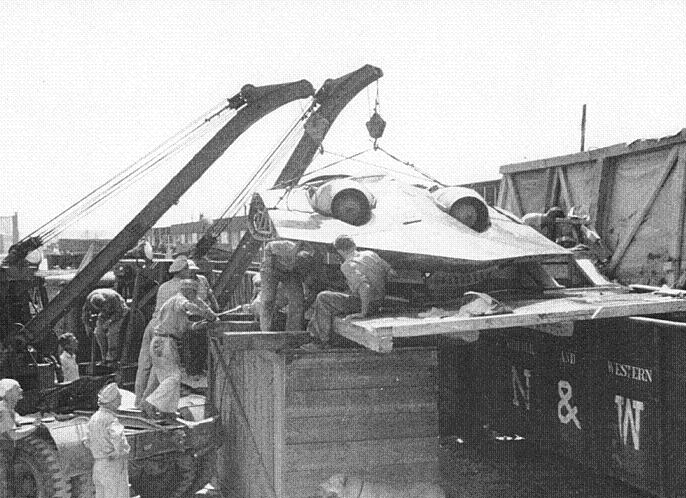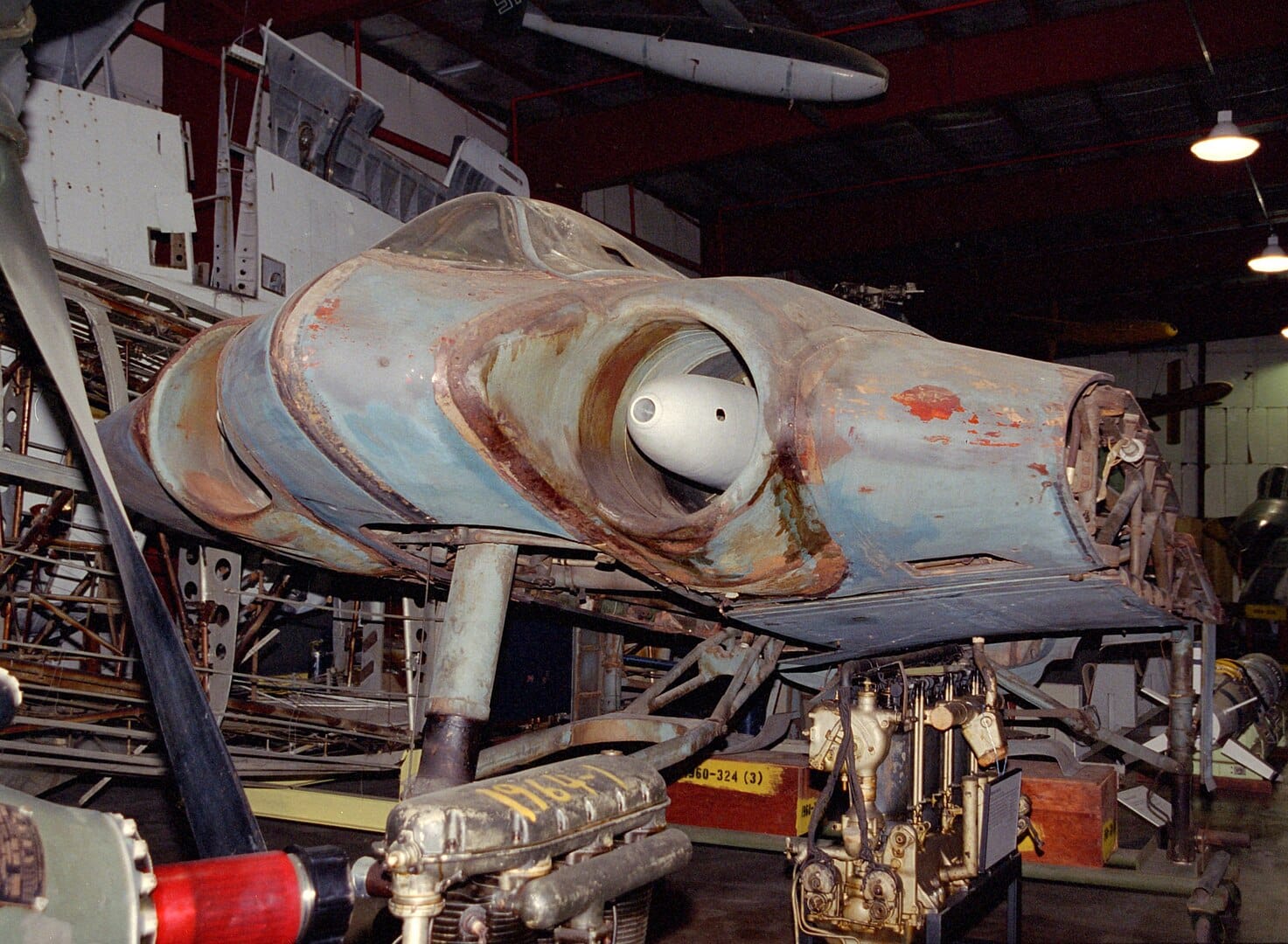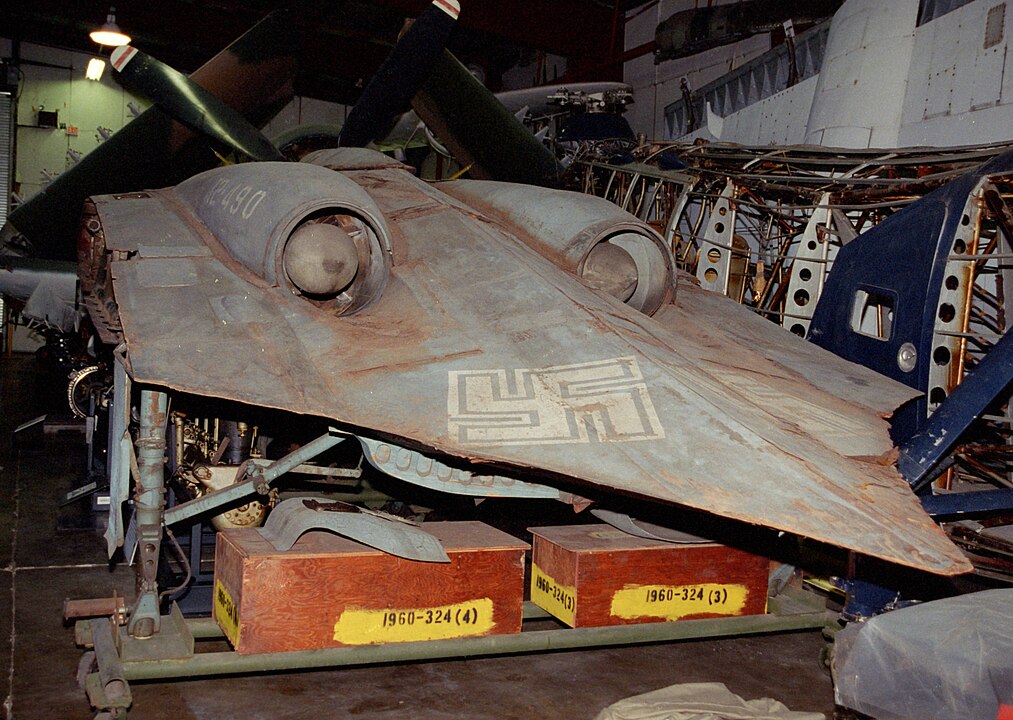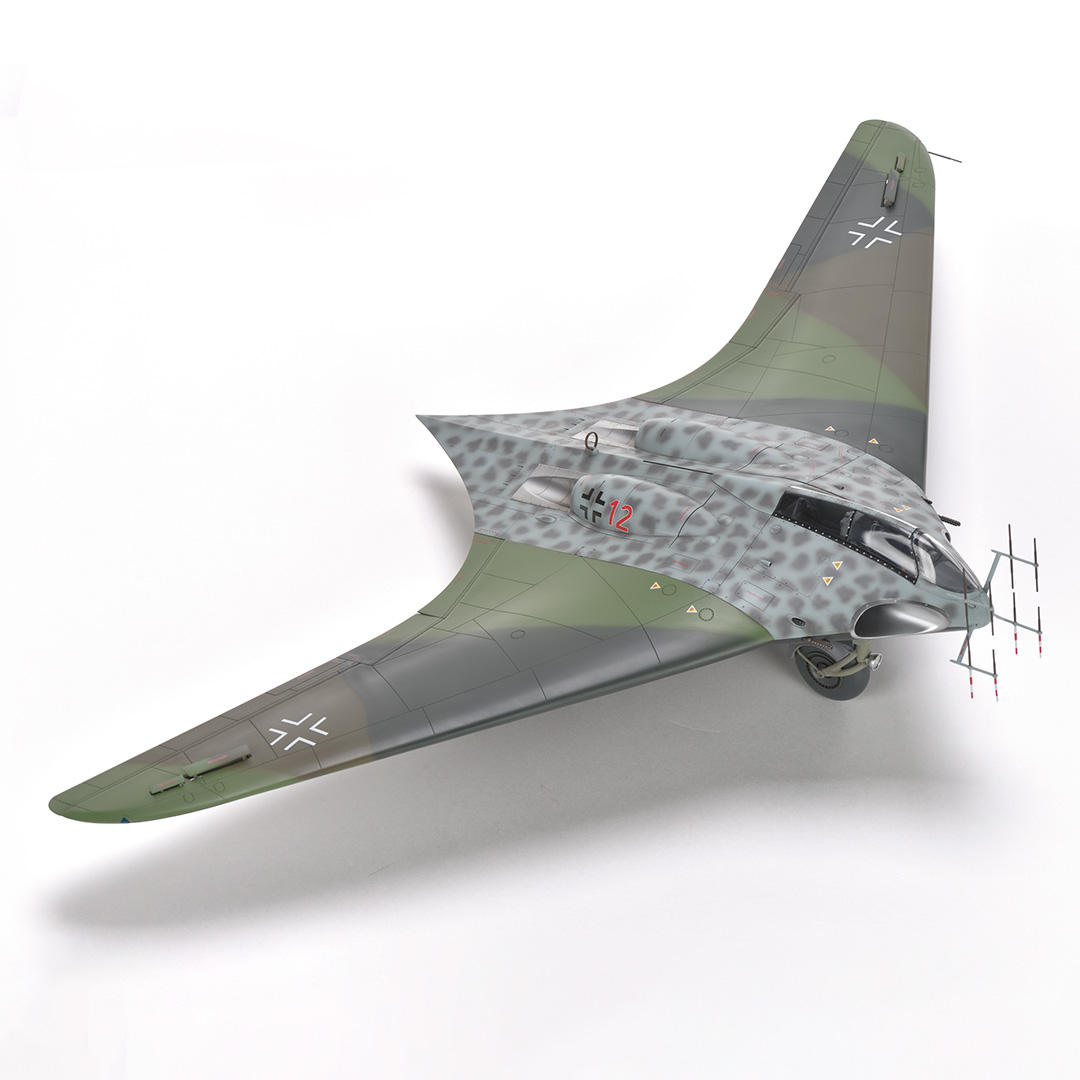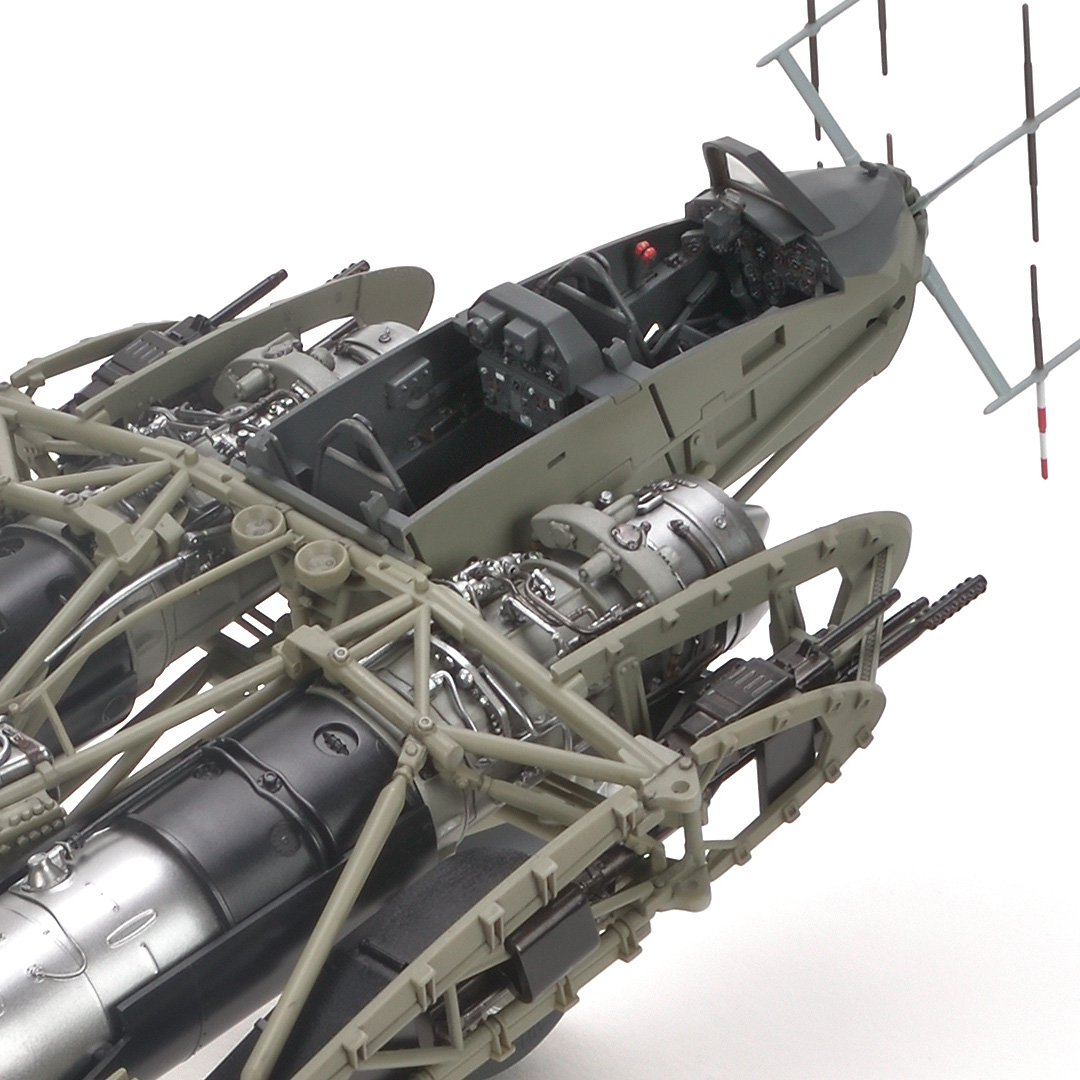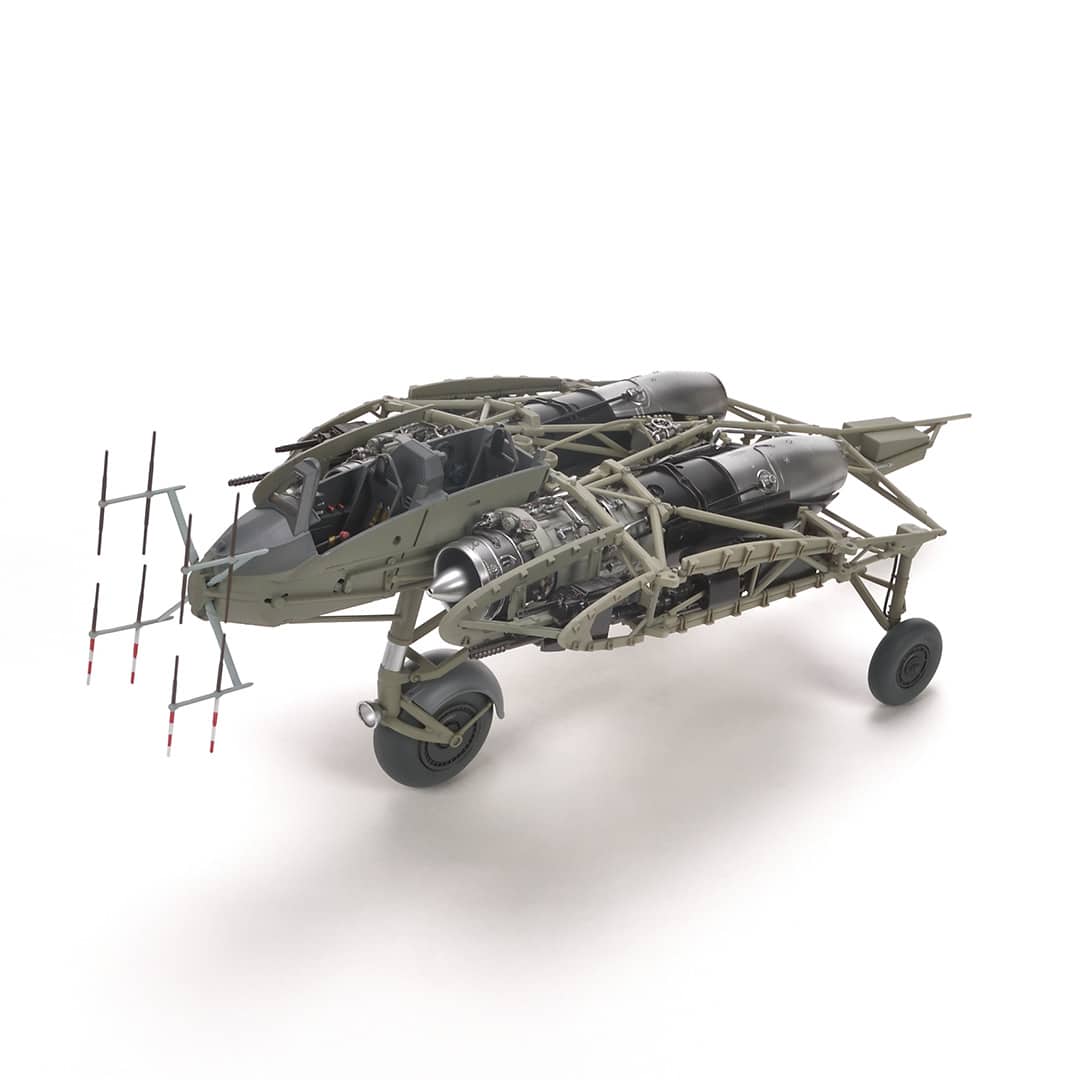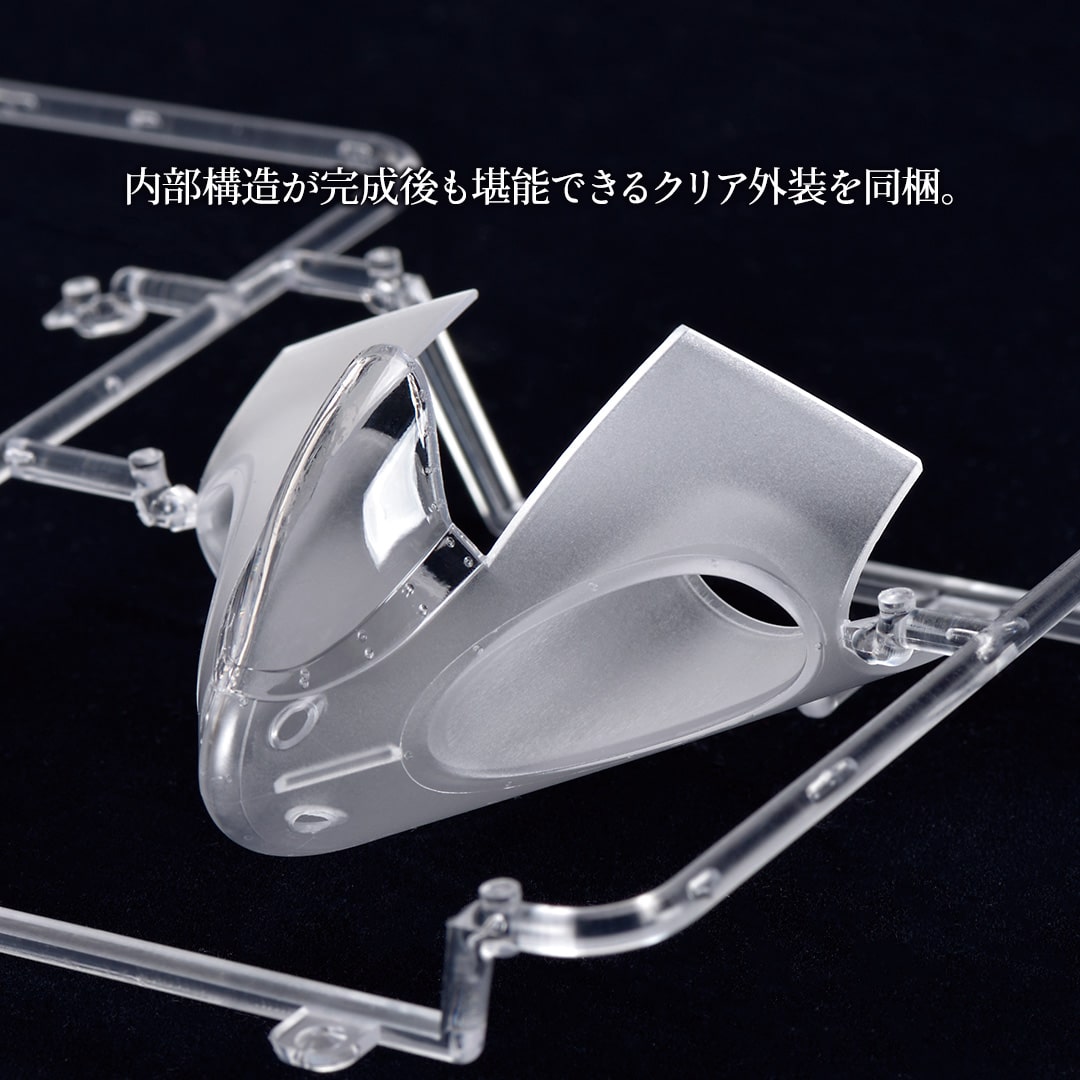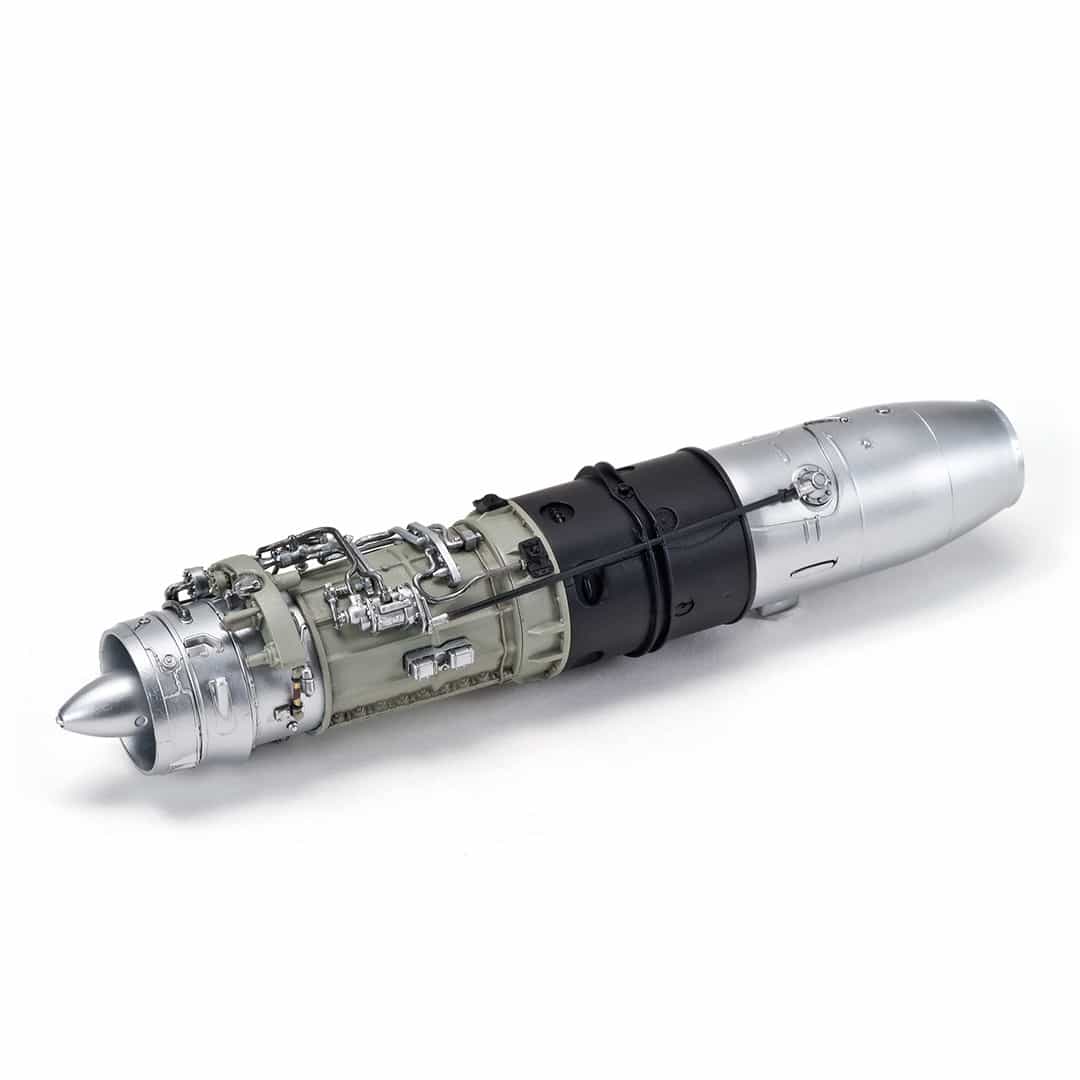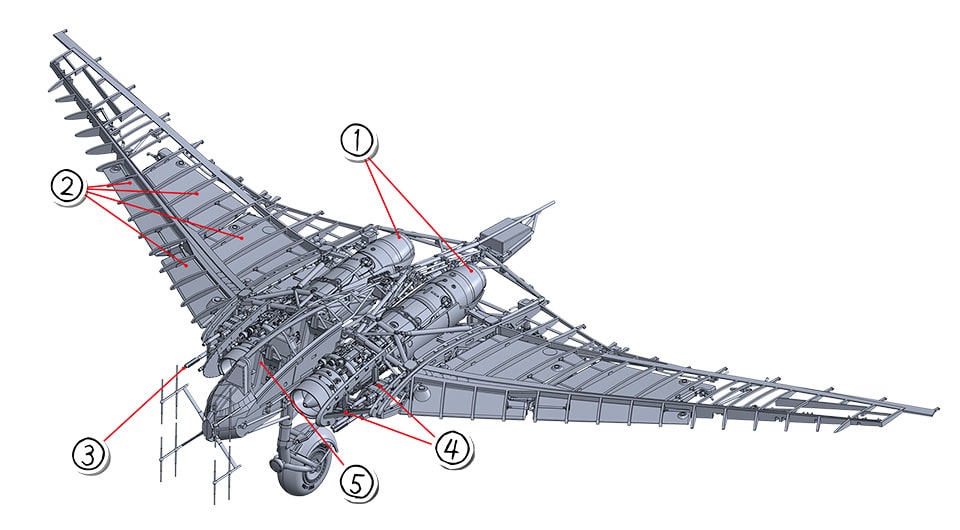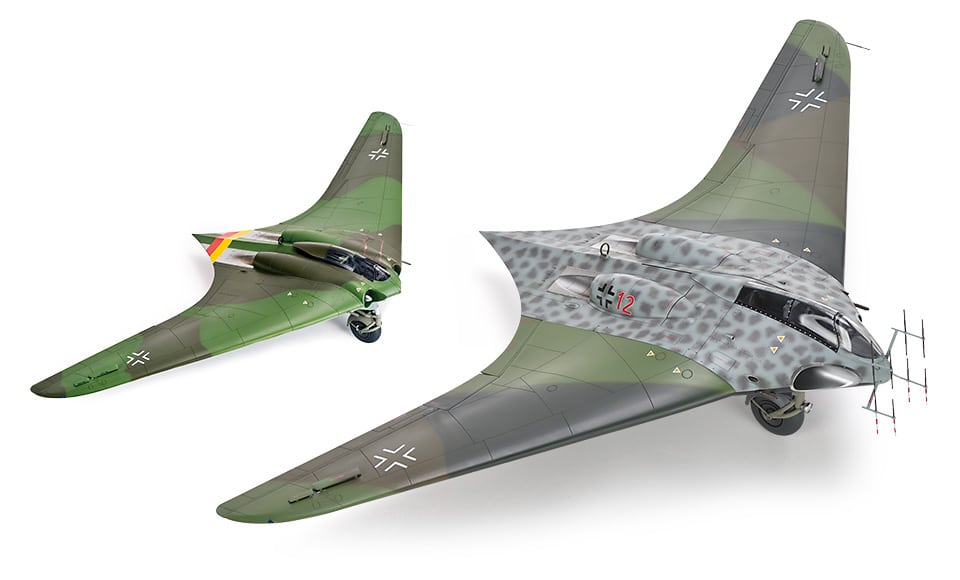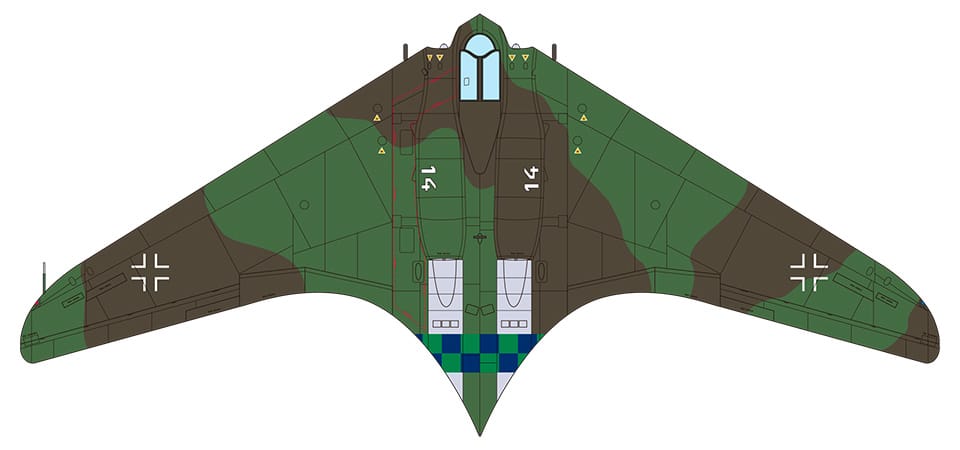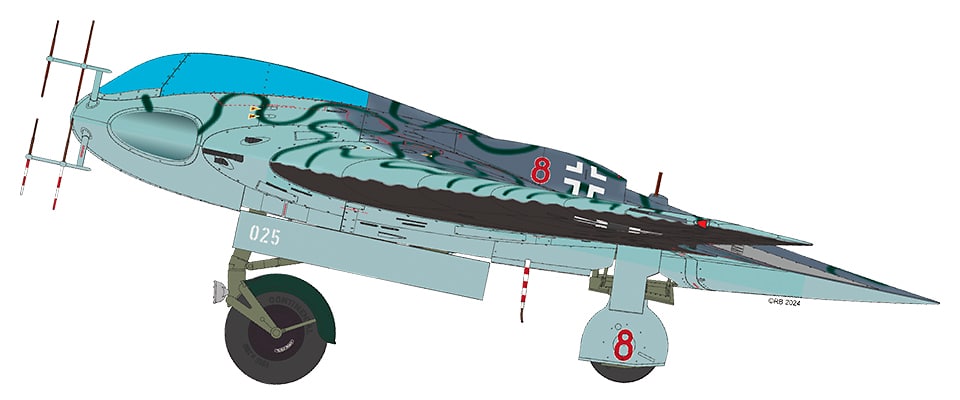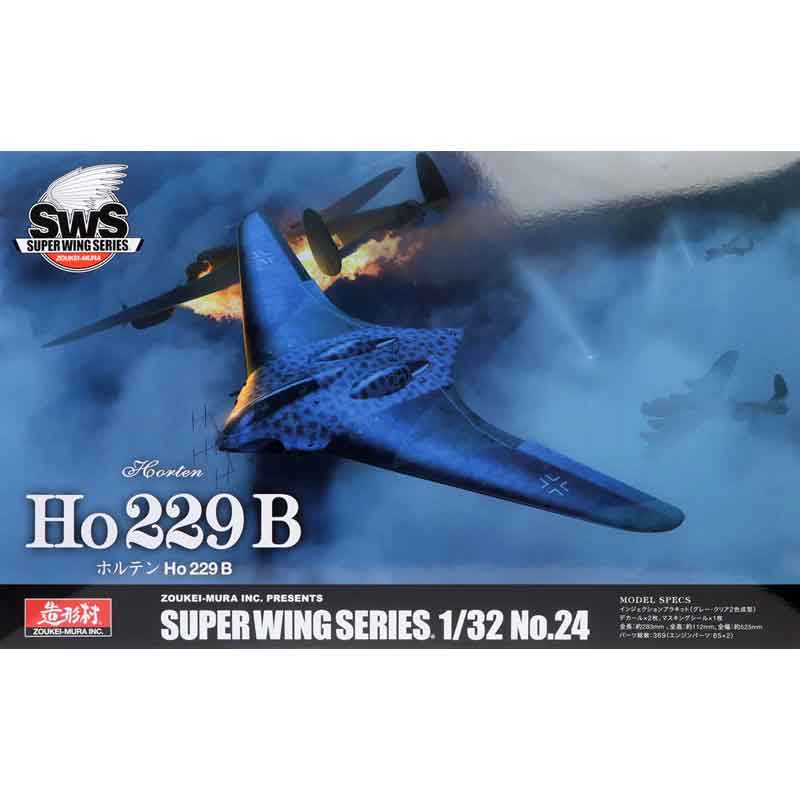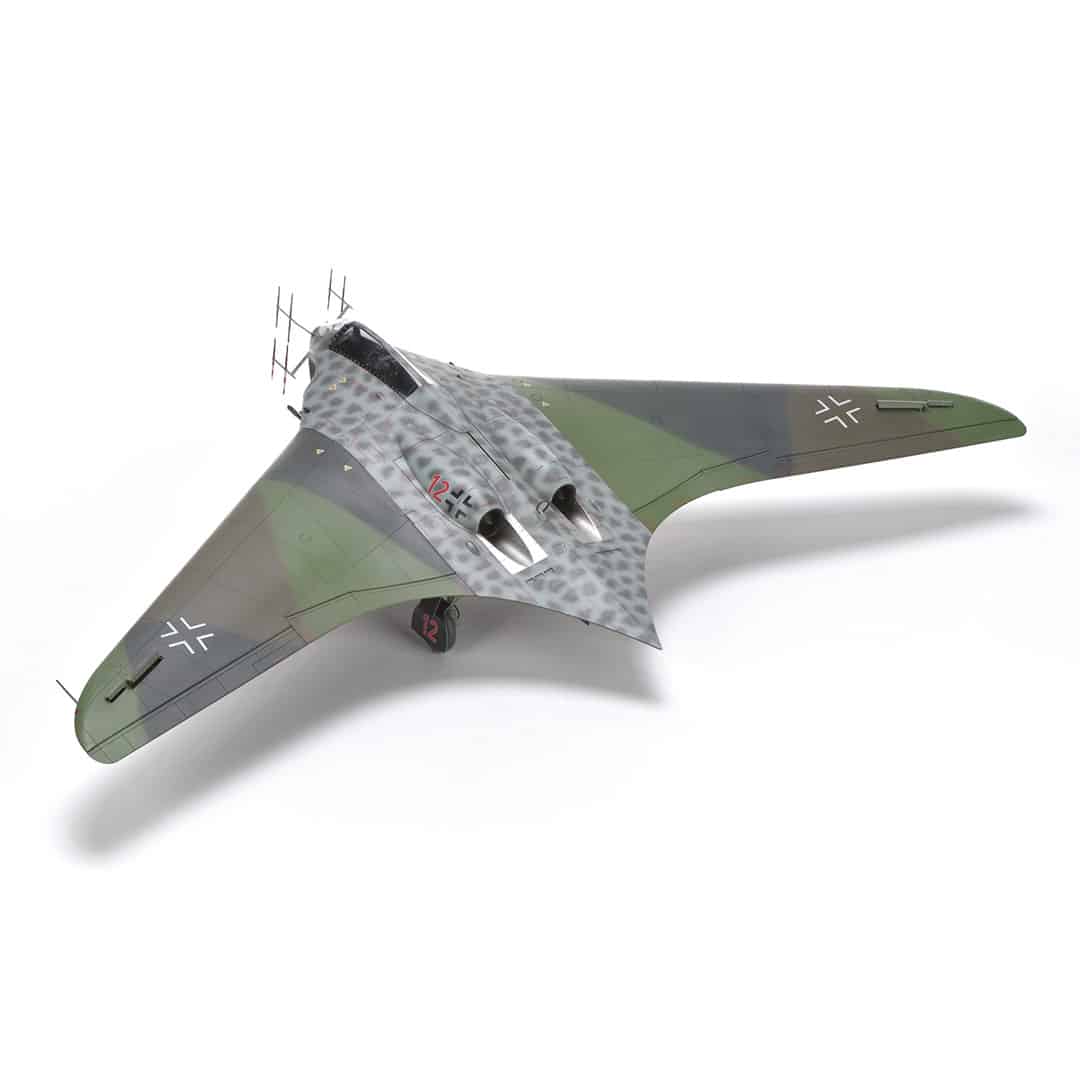Dive into Zoukei-Mura’s latest masterpiece: the 1/32 Horten Ho 229B (SWS24)
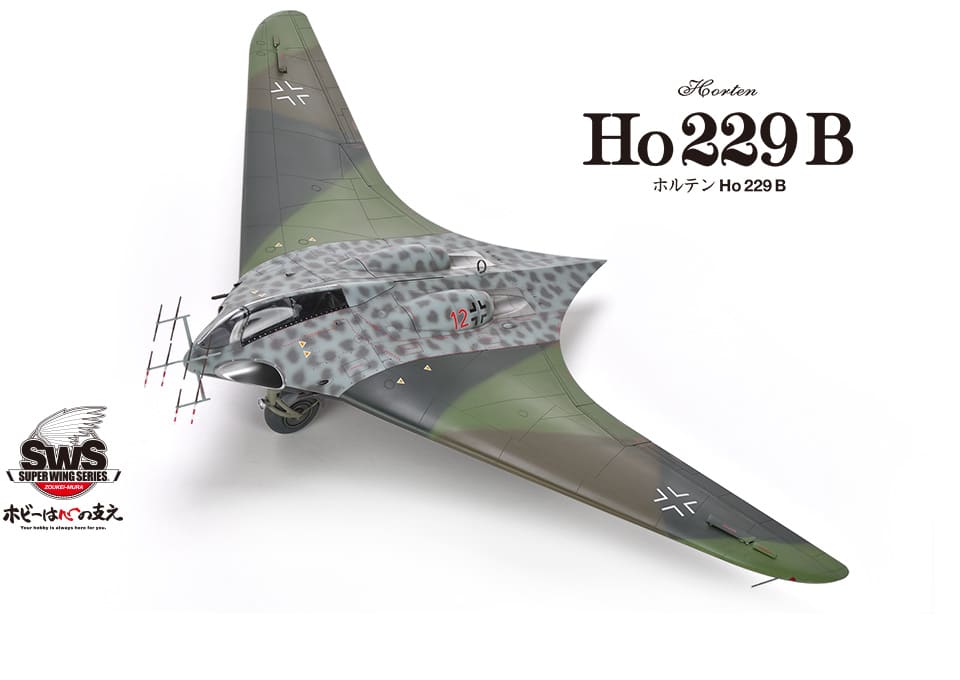
Zoukei-Mura Unveils the Highly Anticipated 1/32 Horten Ho 229B Night Fighter (SWS24): A Visionary “What If” for Discerning Modelers
Dive into Zoukei-Mura’s latest masterpiece: the 1/32 Horten Ho 229B (SWS24). This premium model kit offers unparalleled internal detail, clear exterior parts, and options to build the single or two-seat variant of Germany’s revolutionary WWII flying wing night fighter. Explore historical context and expert modeling insights for this highly detailed, late-war “wonder weapon.”
In the pantheon of World War II aviation, few aircraft capture the imagination quite like the Horten Ho 229. A radical “flying wing” concept born from the desperate final days of the Third Reich, it represents a remarkable leap in aeronautical design, hinting at technologies that would become commonplace decades later. Zoukei-Mura, renowned for its “Super Wing Series” (SWS) kits that delve deep into aircraft anatomy, has once again pushed the boundaries of scale modeling with the highly anticipated release of their 1/32 scale Horten Ho 229B Night Fighter (SWS24).
This premium kit, scheduled for release in August 2025, is more than just a model; it’s a comprehensive engineering study, allowing enthusiasts to peel back the skin of this futuristic design and explore its intricate internal structures. For expert modelers who crave complexity, accuracy, and a tangible connection to aviation history’s most intriguing “what if” scenarios, the Ho 229B is poised to become a definitive centerpiece.
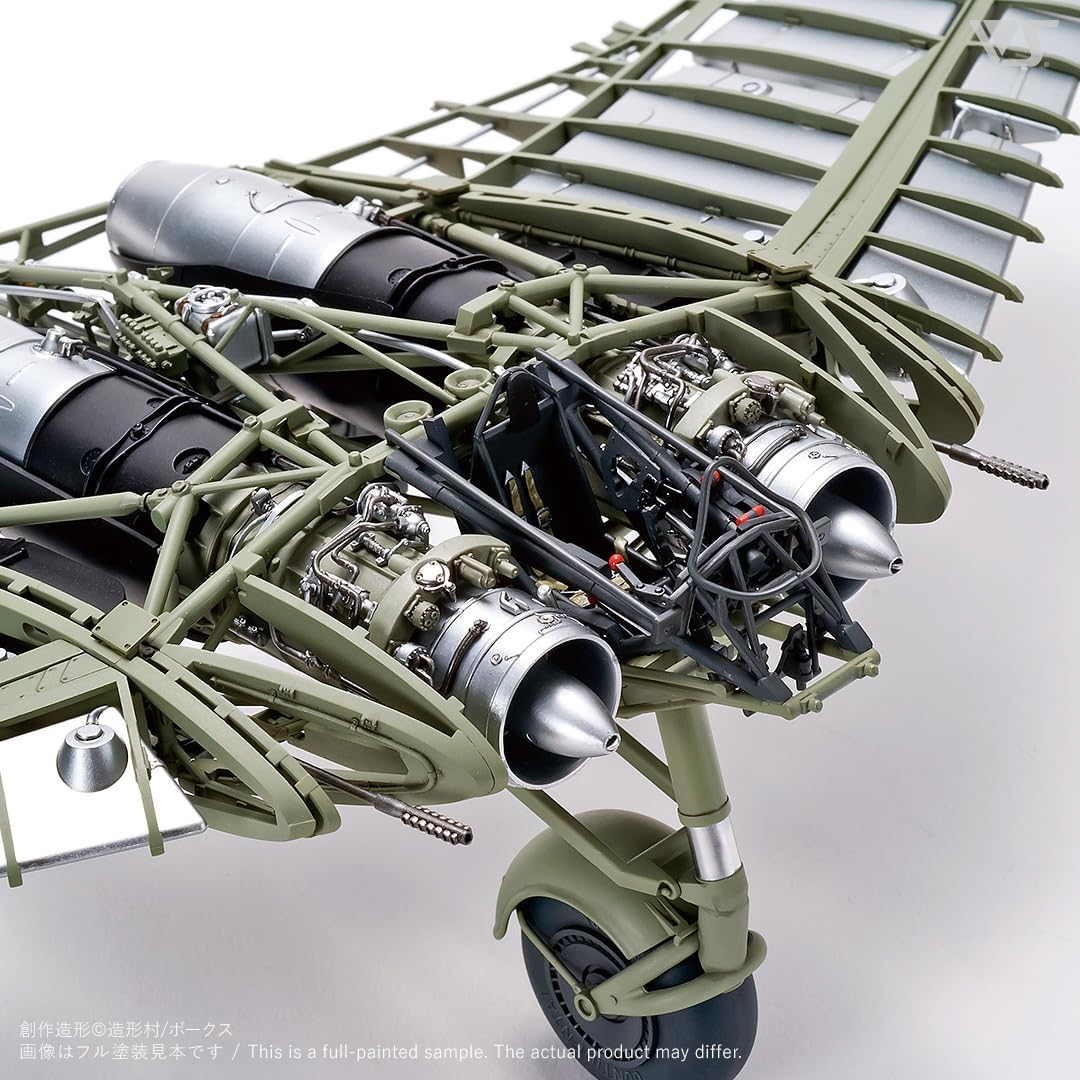
From Amazon https://amzn.to/452uGat
The Horten Ho 229: Germany’s Revolutionary “Flying Wing”

https://en.wikipedia.org/wiki/Horten_Ho_229#/media/File:Horton_229_V3_-_Radar-testing_Ho_IX_V3_reproduction_at_the_San_Diego_Air_and_Space_Museum_(9668114493).jpg
Historical Context:
The Horten Ho 229 (originally designated Horten H.IX, and later sometimes referred to as Gotha Go 229 due to Gothaer Waggonfabrik’s involvement in production) was a German prototype fighter/bomber designed by the brothers Reimar and Walter Horten during the latter stages of World War II. It was conceived under Hermann Göring’s “3×1000” requirement: to carry 1,000 kg (2,200 lb) of bombs a distance of 1,000 km (620 mi) at a speed of 1,000 km/h (620 mph). Only jet-powered aircraft could achieve such speeds, but their immense fuel consumption made the range requirement challenging. The Horten brothers believed an all-wing design, with its inherently lower drag, was the only viable solution.
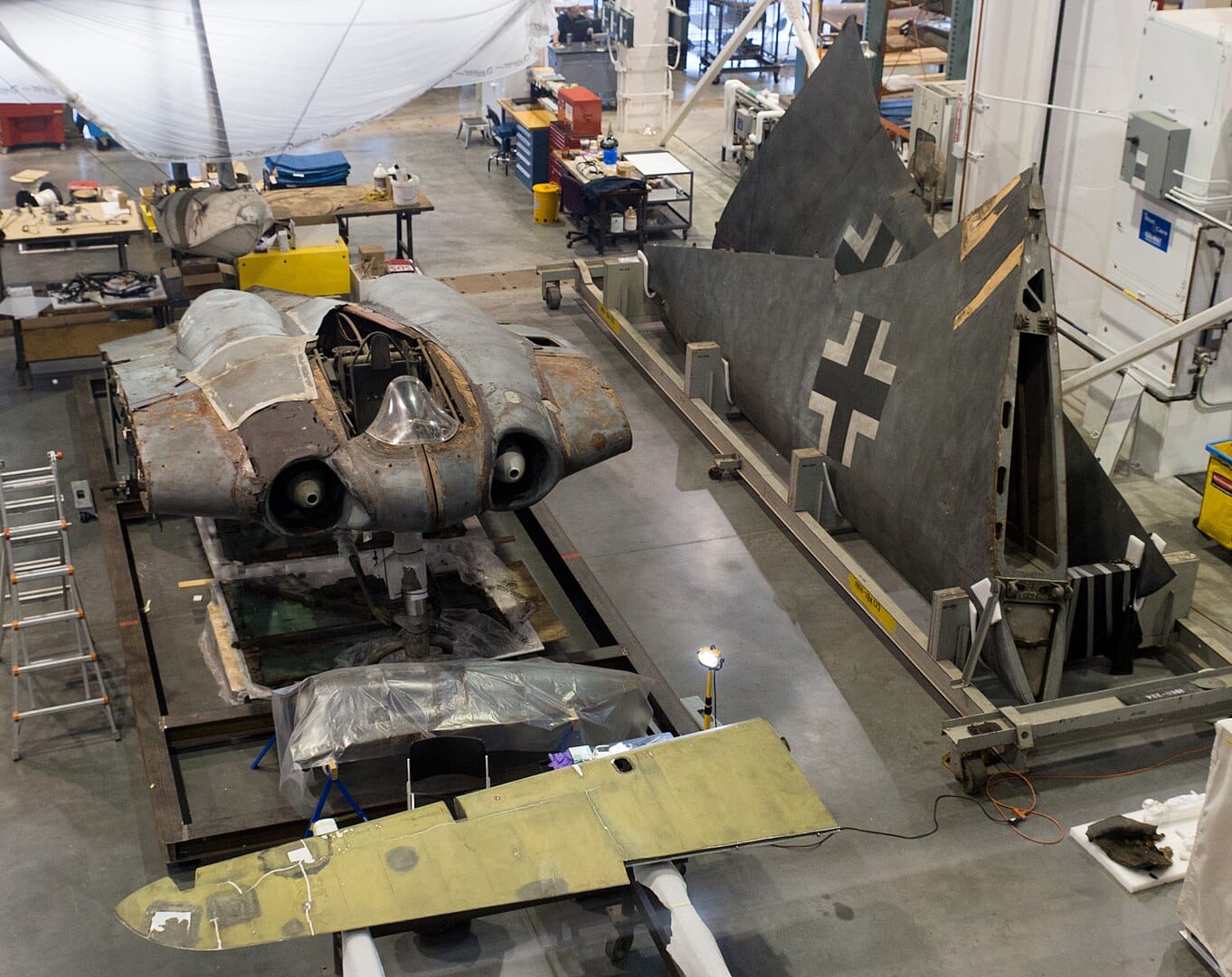
https://airandspace.si.edu/collection-objects/horten-ho-229-v3
Their fascination with flying wings stemmed from years of glider experimentation. The Ho 229 was a mixed-construction aircraft, featuring a central fuselage pod made of welded steel tubing and wing spars built from wood. The outer wings were skinned with thin plywood panels glued with a charcoal and sawdust mixture, which some speculate offered early “stealth-like” radar-absorbing properties, though this is debated by historians. Only a few prototypes were built and tested. The Ho 229 V1 was an unpowered glider. The Ho 229 V2 was the first jet-powered example, making its maiden flight in December 1944 but tragically crashing during its third test flight in February 1945, killing its test pilot. The Ho 229 V3, an enlarged single-seater, was nearly complete when captured by advancing U.S. troops in April 1945 and later transported to the United States as part of “Operation Paperclip.”
The Ho 229B Variant – A Night Fighter Vision:
The Ho 229B was a proposed two-seat variant, intended for use as a night fighter or trainer. While it never progressed beyond a tubular framework at the war’s end, the concept envisioned a second crew member, a radar operator, seated behind the pilot. This version would have been equipped with a nose-mounted FuG 220 “Lichtenstein” SN-2 radar array (a common German night fighter radar) and a heavy armament of multiple 30mm Mk 103 and Mk 108 cannons. The Ho 229B represents a fascinating “what if” in aviation history – a highly advanced, potentially formidable night interceptor that was never fully realized.
Technical Aspects (Real Aircraft Concepts):
The Ho 229’s “pure flying wing” design eliminated the drag of a conventional fuselage and tail. Control was achieved through elevons (combining elevator and aileron functions) and unique “drag rudders” – split flaps on the wingtips that opened to provide yaw control. It was designed for a high load factor, hinting at extreme maneuverability. Power was to come from two Junkers Jumo 004B turbojet engines, positioned deep within the wing roots. The aircraft utilized a retractable tricycle landing gear. Its estimated performance was truly impressive for its time, with a planned speed of 1,000 km/h (620 mph) and a high service ceiling. The internal structure featured a complex tubular framework to provide strength and house the engines, fuel tanks, and armament within the wing itself.
Zoukei-Mura 1/32 Horten Ho 229B (SWS24): A Modeler’s Engineering Study
Zoukei-Mura’s Super Wing Series (SWS) kits are renowned for their philosophy of revealing the “true form” of the aircraft, both inside and out. This means meticulously researching and replicating the internal structures that are often hidden in conventional kits. The 1/32 Ho 229B (SWS24) promises to embody this philosophy, offering an unparalleled level of detail.
Key Kit Features (Derived from Zoukei-Mura’s information):
- 1/32 Scale: A large scale that allows for incredible detail and an imposing finished model.
- All-New Tooling (SWS24): Represents a fresh, state-of-the-art approach to this aircraft, building upon Zoukei-Mura’s prior Ho 229 kit (SWS08) with specific focus on the ‘B’ variant’s unique characteristics.
- Single-Seat or Two-Seat Build Option: This is a major highlight, allowing modelers to choose between the Ho 229A (single-seater, akin to the V3 prototype) or the two-seat Ho 229B night fighter configuration. All necessary parts and decals for both versions are included.
- Full Internal Detail: True to the SWS philosophy, the kit features:
- Skeletal Panels & Tubular Framework: Recreating the complex steel tube and wood structure of the central pod and wing roots.
- Detailed Jumo 004 Turbojet Engines: Not just external nacelles, but full, multi-part engines, including compressor blades, drive shafts, and combustion chambers. These can be displayed, or encased within the clear fuselage.
- Fuel Tanks: Internal fuel tanks are molded and fit within the wing structure.
- Weaponry: Mk 103 and Mk 108 30mm cannons with their intricate ammunition feeds, positioned within the wing structure.
- Cockpit: Highly detailed for both single and two-seat versions. Includes two sets of ejection seats (with and without molded-on harness straps), plastic instrument panels (clear and grey options), and detailed decals for dials, including a unique overlay decal for the rear of the clear panel. The radar operator’s station for the ‘B’ variant is fully detailed with its specific instruments and decals.
- Radar Equipment: Includes the FuG 220 Liechtenstein radar array for the nose of the night fighter variant.
- Clear Exterior Parts: A hallmark of SWS kits, many of the major fuselage and wing panels are molded in clear plastic. This allows modelers the option to display the incredible internal detail, giving a “see-through” effect. These can, of course, be painted over for a standard finish.
- Separate Control Surfaces: Elevons, air brakes, and unique “drag rudders” (on upper and lower wings) are separate parts and can be posed in various positions (deployed or retracted), adding dynamic display options. The inner surfaces of dropped flaps feature deep structural detail.
- Detailed Landing Gear: Robust and chunky, designed for easy assembly, with optional weighted resin tires often available as separate accessories.
- Decal Sheet: High-quality decals, typically printed by Cartograf, including stencil markings and unique markings for multiple schemes (e.g., 229B Red 12, 229B Red 8, 229A-0 White 14 ISS I./JV44, 229A-0 JG. 301).
- Masking Sticker: Pre-cut masks for canopies and other clear parts are included, simplifying the painting process.
- Comprehensive Instruction Manual: Zoukei-Mura manuals are renowned for their detail, often resembling technical documents, guiding the modeler through the complex layered build process.
- Total Parts: 369.
- Dimensions (assembled): Length: 283mm, Height: 112mm, Width: 525mm.
Expert Modeler’s Perspective:
The Zoukei-Mura Ho 229B is an advanced model kit that caters to experienced modelers seeking a challenge and a highly detailed outcome. The “layered” construction process, where internal structures are built first before being encased, demands a “paint as you go” approach.
- Interior Painting: The intricate tubular framework, engines, and cockpit details will require meticulous painting and weathering before enclosing them. Modelers aiming for the clear exterior option will need to ensure flawless painting of these internal components.
- Clear Parts Handling: Working with large clear exterior parts requires extra care to avoid scratches, glue marks, and dust ingress. Consider using clear glues or UV-activated resins for assembly.
- Engines: The Jumo 004 engines are mini-models in themselves. Achieving a realistic metallic finish and subtle weathering for internal engine components will be a rewarding task.
- Weathering: For a late-war “paper project” that saw limited flight, weathering might be subtle, focusing on factory finishes or very light operational wear. However, depicting a “what if” operational aircraft allows for more extensive artistic license.
- Display Options: The ability to build single or two-seat variants, pose control surfaces, and choose between clear or opaque exteriors provides immense flexibility for display.
- Aftermarket Potential: While the kit is incredibly detailed out-of-the-box, Zoukei-Mura often supports their SWS kits with dedicated resin pilot figures, weighted tires, metal gun barrels, and photo-etched interior sets (some mentioned in Zoukei-Mura’s blog, released concurrently with the kit), offering even further enhancement options for the super-detailer.
The Ho 229B, with its radical design and the “what if” allure of its intended combat role, is a truly captivating subject. Zoukei-Mura’s SWS approach elevates it to an engineering showcase, allowing modelers to appreciate the genius of the Horten brothers’ vision.
The upcoming release of the Zoukei-Mura 1/32 Horten Ho 229B (SWS24) is a landmark event for the scale modeling community. This kit represents the pinnacle of modern model engineering, combining the fascination of a visionary, late-war German aircraft with Zoukei-Mura’s renowned commitment to internal detail and accuracy. With its comprehensive parts count, versatile build options (single or two-seater, clear or opaque exterior), and an obsessive level of internal detail, the Ho 229B promises an immersive and rewarding build experience. Scheduled for release in August 2025, this premium kit is poised to become a coveted item for enthusiasts of unique aircraft and intricate model construction. Prepare your workbench; a true bird of prey is about to take flight.
Source:

